Tips on Ceiling Repair
Find out your options for applying a seamless drywall patch on a textured ceiling.
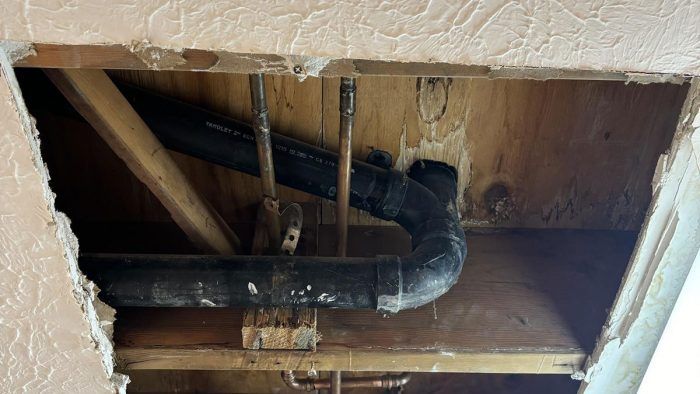
Member LargePeopleLiveHere posted that recently, he had a leak in a water pipe in a very textured kitchen ceiling. He had to remove a section of drywall to access the pipe and is planning to repair the hole with a patch with extra blocking, drywall, tape, and compound. He’d like to know if there’s any other prep required, such as removing any other damaged, damp drywall or concealing the water stains, which he was planning on painting with a stain-blocker.
The topic of this Q&A Spotlight is: How can this homeowner fashion a drywall patch that blends seamlessly in the surrounding ceiling?
Patching is one thing, but that texture…
Calvin’s advice is to remove any drywall that’s still damp and to square up the hole. He says to fill any voids with compound after fastening the patch and before applying the tape, then to tape and finish. He has less handy advice concerning how to match the texture, though, and recommends that the poster think about hiring a pro.
John Bowne agrees that cutting back the frayed drywall is a good idea. He also suggests scraping back the existing texture around the patch to make a smoother tape job. Other recommendations include using an oil-based primer or Zinsser pigmented shellac to conceal the water stains, and even replacing the entire drywall ceiling.
The original texture technique is the subject of some debate. Bobbomax thinks the finish looks like the texture was applied with a thin layer of diluted mud that was dabbed with a wadded-up plastic bag. He thinks that it’s very difficult to reproduce, and that an earlier post recommending replacing the entire ceiling might be a good idea.
JohnOlson thinks the whole idea of textured ceilings is a bad idea and thinks this particular texture was created by loading compound onto a brush and slapping it onto the drywall.
Our expert weighs in
We asked Myron Ferguson, drywaller and frequent FHB contributor, for his advice, and this is what he had to say:
What I see are two repairs. The first is the drywall repair, which I believe is the easier of the two. The second is matching the texture, which should look good after painting. Hopefully, you noticed the leak, removed the bad drywall, and repaired the plumbing soon enough so that mold did not start to grow.
Your idea of floating two edges of the repair by screwing a furring strip behind the edges parallel to the joists is good. This will make for a smoother repair. First, make sure the drywall is dry before starting the repair. If it is still wet and sagging in places, use a T-support or some other method to hold the drywall up and flatten it out while it dries. (You’ll have a hard time doing this when the drywall has dried out.) Enlarge the hole away from the joists and if possible, remove the damaged and/or stained areas. I have found that is better to remove the stained parts, rather than just sealing them with a stain blocker, especially if you are texturing. The wet texture may pull the stain through, even if sealed.
Before you attach the new piece of drywall, see if you can smooth out the texture with a sharp taping knife or even a sander with a coarse-grit paper at least 12 in. from the hole. Taper the edge of the texture into the surrounding texture. This will be helpful when blending in the texture by minimizing the bump you could create between the old and the new.
I usually use a setting compound to embed the tape and for the first fill coat when doing repairs because it speeds up the process, but you can just use an all-purpose drying-type compound if you prefer. When the repair is finished, make sure the edges are sanded out smooth.
Now to repair the texture. This looks to me like a “stomp” texture; I think it was done with a specially-designed brush, possibly a crow’s foot texture brush. You can use joint compound as your texture material. Just mix up a small batch that’s thinned with a little water, apply it with a ½-in.-nap paint roller, and use the brush to create the texture. Practice on a scrap piece of drywall before trying it on the ceiling. You’ll have to adjust the consistency of the mix until you can create a match.
Because you have the old textured edges tapered out to the smooth patched area, it should be easier to blend. Don’t be afraid to apply the texture over the edge and onto the old texture.
Matching the textures is the hardest part. If the edges don’t blend in perfectly, you can use a sanding or wet sponge to help them blend. If you can’t get the repaired-area texture to match well enough, you may have to consider rolling on a thin layer of compound over the entire ceiling and then using the texture brush to create a more uniform texture.
Another thing to consider, especially if you were able to blend in the repaired-area texture, is that now you will have to paint the entire ceiling. So just as when you do a drywall repair on a smooth surface, you will need to prime the repaired area. I recommend priming the entire ceiling and then finishing with a flat white ceiling paint. You can see how I’ve done this type of repair in a video on my YouTube channel.
Chuck Bickford is a contributing editor. Myron Ferguson is a professional drywaller and certified building-performance analyst.
RELATED STORIES
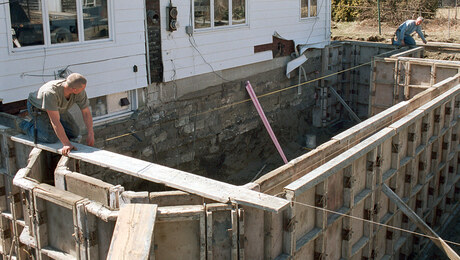
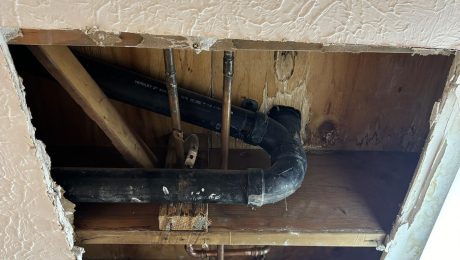




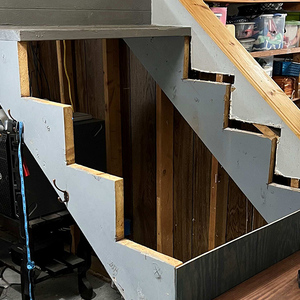
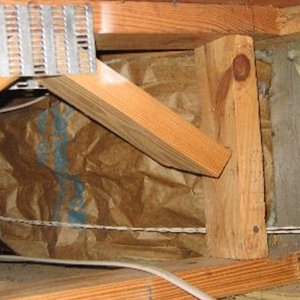
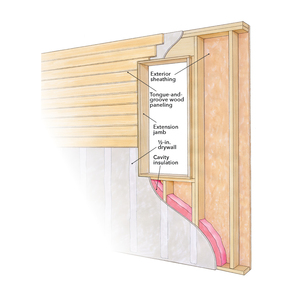




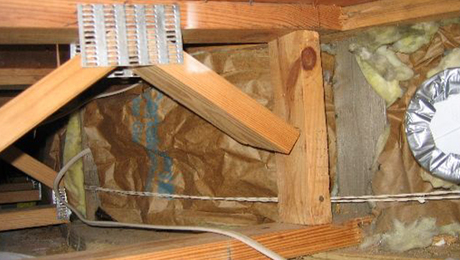
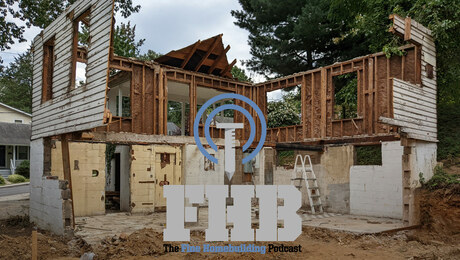
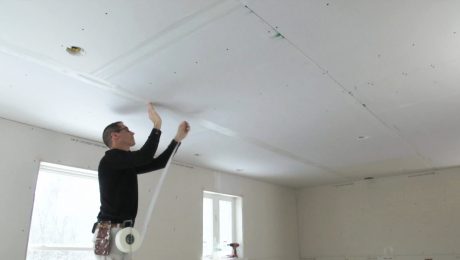
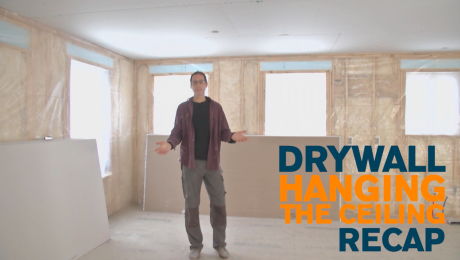
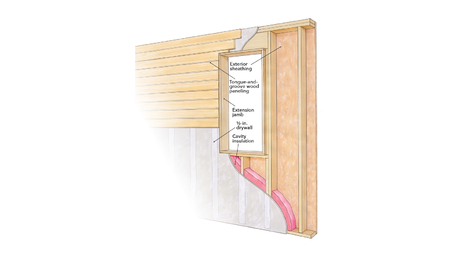

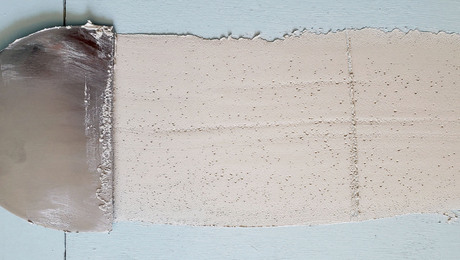









View Comments
I do better:
https://plasterrepairhowto.blogspot.com/2016/05/a-16-square-knockdown-texture-field.html
Sandable acrylic putty is the key. I offer free samples of my own material, that I call Flexible Grout. Please read the header paragraph above the blog post
Please read more about Flexible Grout at my principal free-sharing blog:
https://energyconservationhowto.blogspot.com/search/label/Flexible%20Grout
This is not a commercial leapfrog of Fine Homebuilding resources. Please help me to create demand and availability of this valuable material, ideally through Custom:
https://www.custombuildingproducts.com/product_categories/grout-materials.
My material is very similar in application and performance to Custom Fusion Pro, except that my brother's invention is forever sandable. It is best field-mixed for large projects, from equal weights of four common raw materials. Its' first application was in quick and lasting replacement of always-failing silicone, foolishly hiding cracks of hotel bath tile-wall corners.